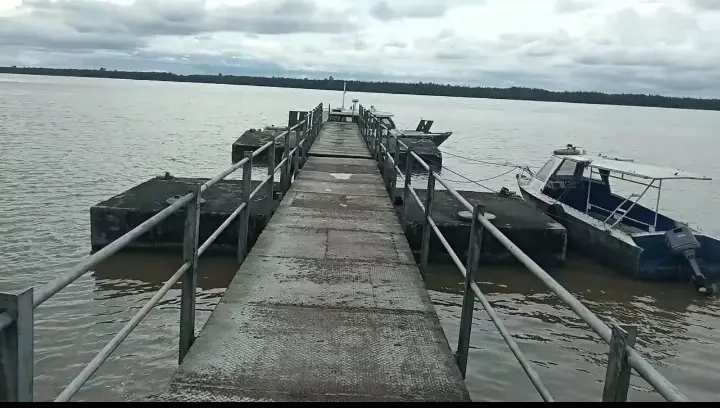The biggest irony in life is the bridge of no return in Ikot Abasi, a popular town in Akwa Ibom State, Nigeria. It’s the safest place in the area despite leaving historical scars on scores of families.
Here is where the irony stems. This is an existing remnant of the atrocities that occurred during the slave trade era here. Dreary as these memories are for centuries now, today t this bridge remains a safe haven.
In spite of the fact that the colonial British administration abolished local slavery in 1880s, they tacitly let it to continue far into the 1930s. And it was not abolished entirely until the 1940s. The newly independent First Nigerian Republic ratified the 1926 Slavery Convention the same year in 1961.

Bridge of no return. Photo/YouTube
What happened at the Bridge of No Return?
The bridge of no return is notorious because it was the final point of discharge for slaves onto the waiting slave ships. The ship ultimately transported them into slavery, mostly to the US and Europe.
The old residents gave it this name and at the name suggests, not a single slave who crossed the bridge ever came back. Thus, ‘no return’ personifies the memorial indifference people have.
Europeans built the jetty in 1795. It came with compartments used as holding areas for stubborn slaves. Each slave held 30 people while the whole jetty had a capacity to hold 150 people. For donkey years, thousands of slaves left their ancestral land here for Europe and the US where they started a new life as peasants.
In total, 31.7% of all slaves acquired by force in the South and Southeast passed through the Bridge of No Return. Slaves were led from the fort to the canoes below, and the canoes would then transport them to the waiting slave ships.
They would then sail across the Atlantic Ocean to the huge plantations in Europe and the Americas. They were held in the dungeons until a ship arrived to take them to their new homes.
Ekpe states that each dungeon was built to hold no more than five persons. But the slave traffickers, in collusion with the British and some locals, kept around 400 slaves in each dungeon for days at a time as they waited for a ship to berth.
They were always in chains and labelled, and many of them died during the waiting days or after being dumped into the sea. Most deaths were because due to the inconvenient arrangement of humans as cargo items.
According to historical accounts, the Ikot-Abasi route was popular for colonial masters. They would capture and sell hundreds of thousands of men, women, and children as slaves to European and American slave masters.
Many peasants were traded for umbrellas, firearms, kettles, cups, dane guns, pottery bows, brass dishes, and tea mugs. The slave traders even traded 40 healthy men for a single umbrella.

Bridge of no return. Photo/Twitter
Where is the Bridge of No Return Located?
The bridge of no return is a populous town known as Ikot Abasi in Akwa Ibom State. Ikot-Abasi has an uncountable number of monuments. However, over the past years, this historical city has received little attention from Nigerians and its government as much as it’s a major tourist attraction site.
The tranquil neighbourhood gives visitors an immediate feeling of longing for times gone by. At first glance, the town appears to be unremarkable and mundane. The countless cenotaphs that it housed before Nigeria’s independence from Britain in 1960 are the source of the town’s significance.
In a nutshell, slavery was a painful thing. But there is a good side to nevertheless. They are big proponents of the African-American descent and music such as Jazz. These slaves used music as a tool for expression and agitation. Over the years, this music genre became huge. While many other people of colour contributed to its growth, slaves who passed through the bridge of no return played a huge role.








